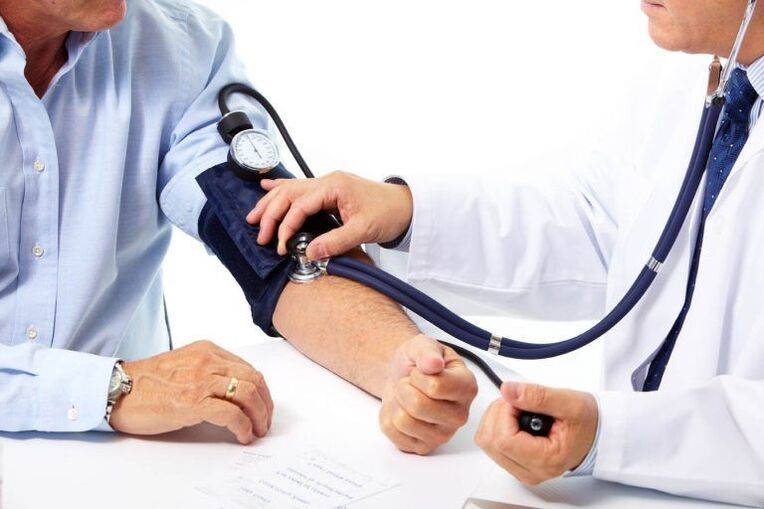
Hypertonic disease is the most common disease of the circulatory system worldwide. About 30% of the world's population suffers from this disease. In recent years, a significant "rejuvenation" of the disease has been observed - among patients, more and more young people.
Hypertension is full of heavy and disabled complications, usually leads to death. At the same time, subject to various rules, the occurrence and development of the disease can be postponed for years. Each person should be familiar with risk factors for the development of hypertension, their symptoms and treatment principles.
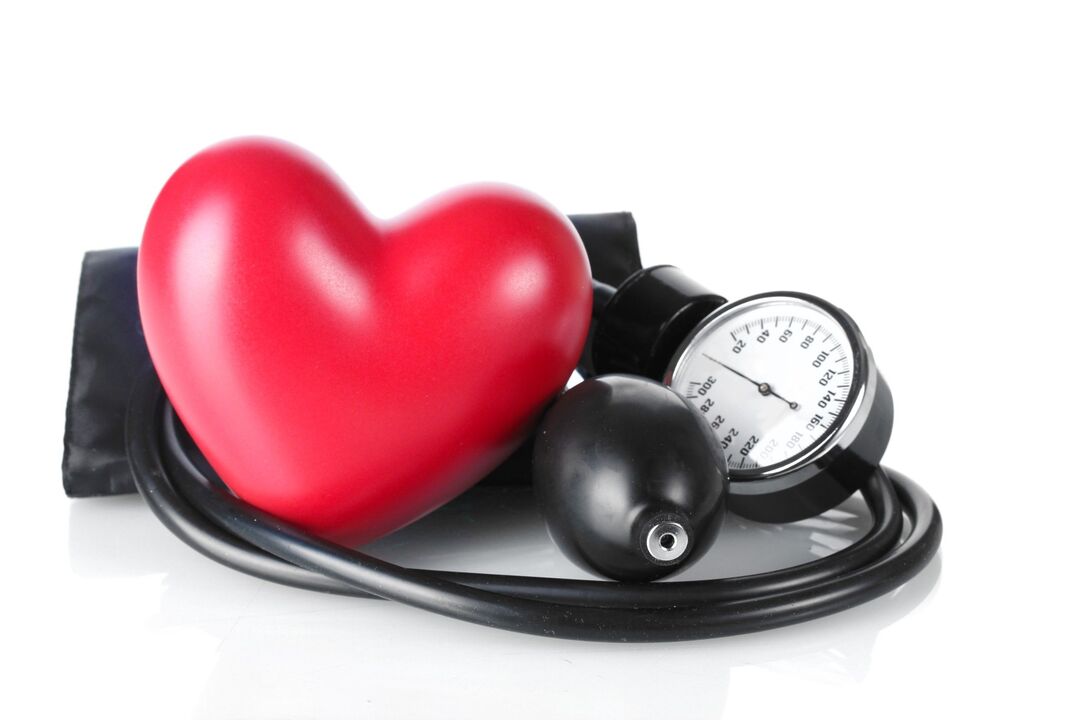
What is hypertension
Hypertonic disease or arterial hypertension (synonym: essential hypertension, primary hypertension) - chronically procedure, progress to progression, in the clinical image of which the main symptom is a persistent and prolonged increase in blood pressure (ie, hypertension syndrome).
Arterial hypertension criteria are considered as systolic blood pressure (blood pressure) from above or equal to 140 mm hg. Art. and/or diastolic blood pressure greater than 90 mm hg. Art.
Etiology of the disease
Hypertonic disease is considered an idiopathic disease, the immediate causes of its occurrence are not established.
Among the numerous theories of the emergence and development of primary hypertension, classical neurogenic theory is more widespread. This concept considers hypertension as a neurotic state of greater nervous activity. The starting mechanism is considered nerve overtension (acute or prolonged, chronic), which causes a violation of the tropism of brain structures that are responsible for regulating blood pressure. Of particular importance are emotions that have not been implemented in the engine sphere, the "unreacted emotions. "
In the occurrence of primary hypertension, a genetic predisposition is tracked. In 35-50% of people suffering from hypertension, the family nature of the disease is observed. A specific gene whose defect would lead to a persistent increase in blood pressure, was not detected. Probably the disease has a polygenic inheritance type.
Pathogenesis of hypertension
The pathogenesis of primary hypertension is complicated and at different stages has its own characteristics. According to neurogenic theory, under the influence of nerve overtestand, the inhibitory effect of the cortex of the large brain hemispheres in subcortical (hypothalamic) vegetative centers is reduced, which causes the sympathetic system of the activation of the presiding (vasoconstrictor). There is an adrenaline emission, cardiac ejection increases, arteries are reduced (including kidney), blood pressure increases. The spasm of the renal arteries acts another powerful prense-renin-angiotensin-aldosterone system, which makes its contribution significant to increased blood pressure. Other vasoconstrite agents are also connected over time - antidiuretic hormone, prostacilla, endotheline, thromboxan. They are opposed by vascular prostaglandins of depressor, Calicrein-Quinine and a sodium reflex system. A long spasm of the arteries leads to a violation of the function of their internal shell (endothelium), restructuring the walls of blood vessels and contributes to the development of atherosclerosis.
Risk factors
Risk factors are attributed to signs, whose presence in humans increases the likelihood of developing the disease. The variety of risk factors for primary hypertension is divided into two groups - modified and unlucked.
Unlucked risk factors (it is impossible to influence them)
These include:
- The male is among men of young and half aging hypertension higher than among women at the same age. The low incidence in women is explained by the protective effect of estrogen. The prevalence of hypertension in representatives of both sexes over 60 is approximately the same;
- Age (over 50 to 60 years)-The prevalence of hypertension increases markedly in old age;
- Heredity - The presence of cases of essential hypertension in a family increases the risk of the disease.
Modified risk factors (subject to influence)
These include:
- SMOKING - Nicotine has a powerful vasoconstricted effect. Active and passive smoking leads to blood vessel cramps, increased blood pressure;
- Obesity - That is, the body weight index is above 30 kg/m2. Clinical studies prove that the incidence of hypertension increases as human weight grows. Subcutaneous fat deposition in the waist area (abdominal obesity) is especially dangerous because it is associated with an extremely high risk of primary hypertension. This is due to the stimulation of the sympathetic adrenal system in fat people. A waist of a waist above 80 cm for women and more than 94 cm for men is a serious risk factor for hypertension;
- A sedentary lifestyle (hypodynamia) - insufficient physical activity causes the development of obesity;
- Excessive receipt of table salt with food products (more than 5 g per day);
- Excessive drink (over 30 g of ethyl alcohol per day);
- unbalanced diet (high -calorie, excessive saturated fats) - causes obesity;
- stressful situations.
Hypertension Classification
Primary hypertension is classified according to the level of arterial hypertension by the nature of the target organs injury.
Classification of hypertension levels (AG)
Systolic blood pressure of the category, mm Hg. Art. Diastolic blood pressure, mm Hg. Art.
- Arterial hypertension I degrees 140-159 90-99
- Grade II arterial hypertension 160-179 100-109
- Grade III arterial hypertension ≥180 ≥110
Classification by the nature of the defeat of the organs
Mishenian organs are called organs in which pathological changes arise mainly due to hypertension. For primary hypertension, the targets are heart, kidney, brain, eye mesh shell, blood vessels.
3 stages of primary hypertension
It is customary to distinguish 3 stages of primary hypertension:
Stage I-Characterized by the absence of changes in the target organs;
Stage II-There are changes in the organs -alive that do not manifest themselves by any symptoms:
- heart: an increase in the left ventricle (according to the results of ECG or heart ultrasound);
- Ships:signs of wall thickening, the presence of plates (according to the results of ultrasound, angiography);
- kidneys:decreased function, microalbuminuria (detection of small portions of protein in the urine);
- The retina: narrowing, impregnation of blood vessels;
Stage III-The symptoms of target organs changes:
- heart: ischemic disease, heart failure;
- brain: Transient disturbance of cerebral blood flow, stroke;
- kidneys:renal failure;
- Vessel: Occlusion of the peripheral blood vessel, which delays the aortic aneurysm;
- Retter of the Eye:Edema, bleeding, exudate.
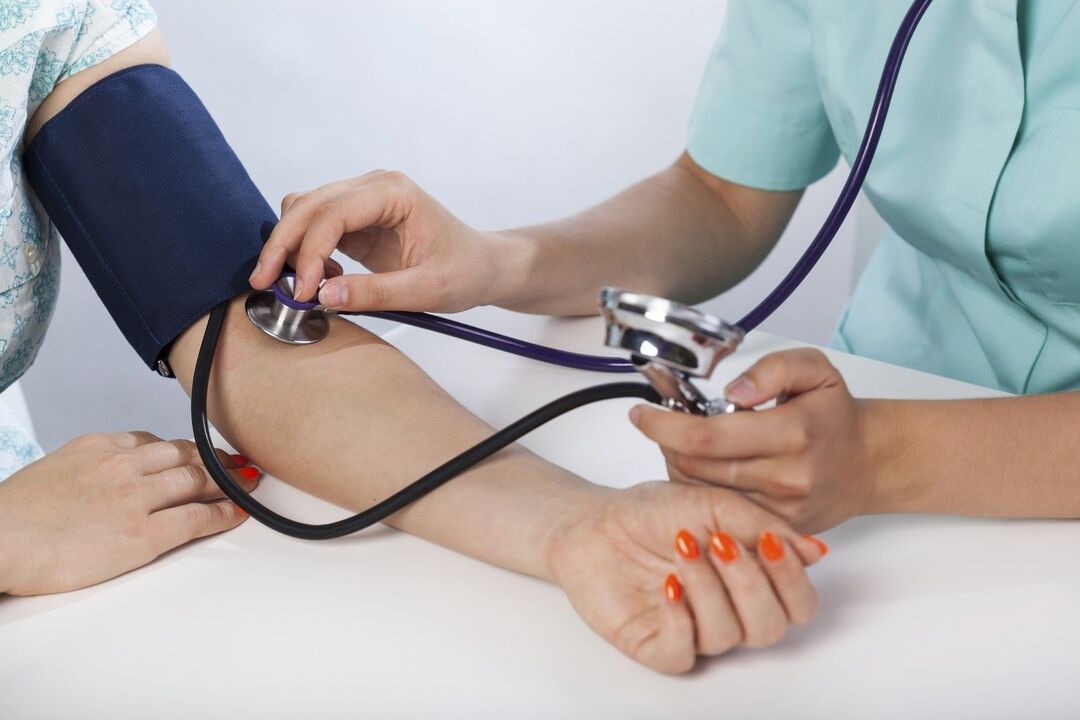
Hypertension symptoms
In some cases, for a long time, the only symptom of essential hypertension remains an increase in blood pressure. It can be accompanied by non -specific head pain complaints (occurs in the morning, the type of "heavy head", locating in the occipital region), irritability, excessive fatigue, sleep disorders, general weakness, dizziness and fast palpitations.
Hypertonic seizures are considered a brilliant sign of the disease (from 1-2 hours to 2-3 days) of the exacerbation of the disease, manifested by a sudden increase in blood pressure. They occur in about one third of patients.
There are 2 types of hypertension crises: first order (adrenal) and second order (norepinephrine).
The first -order hypertensive crisis develops more often in half -times people. The rise of blood pressure occurs at night, accompanied by headache, chills, extremity cooling, anxiety, anxiety, a rapid heartbeat.
A second hypertensive crisis of order is characteristic of the elderly. Increased blood pressure is accompanied by marked headache, impaired visual perception, inhibition, drowsiness, nausea, vomiting.
With a prolonged experience of hypertension in the clinical picture, the main site is occupied by symptoms of organs diseases -target: cloth pain with angina pectoris, shortness of breath, swelling with heart failure, symptoms of a stroke, etc.
Hypertension diagnosis
To establish a diagnosis of hypertension to a person, it is necessary to identify a persistent increase in blood pressure and exclude the presence of other diseases that are characterized by hypertension syndrome.
An increase in blood pressure is determined using a conventional tonomer - hell is measured by a doctor or patient. An indispensable condition is to comply with the methodology of measuring blood pressure and measurement is performed after 3-5 minutes of rest in a comfortable, sitting, rest, shoulder and heart environment, should be located on the same level. The blood pressure level above 140/90 mm hg. Art. He speaks of suspicion of essential hypertension. In complex diagnostic cases, the daily monitoring methodology of blood pressure is used.
Diseases that accompany high blood pressure
In addition to hypertension, there are Still a Number of Diseases Accompanied by an increase in blood pressure: Kidney Pathology (Chronic Pyelo-/Glomerulonephritis), vasorenal hypertension (caused by narrowing of the renal artery), adrenalTumor-toochromochromocytoma, Aortic Coarctation (Congenital Defect of the Vessel), Endocrine Disorders (Conn Syndrome, Disease Syndrome, Disease. To exclude the presence of these pathologies, the doctor prescribes a comprehensive examination.
An additional examination aims to detect orgen pathologies -alive. It allows to clarify the hypertension stage, prescribe appropriate treatment.
Diagnostic measures include:
- ECG: There may be signs of left ventricular increase (hypertrophy), ischemic changes, acute myocardial infarction signs.
- X -ray of the thoracic organs: changes in the contour of the heart (manifestation of left ventricular hypertrophy) can be detected;
- Echocardiography (heart ultrasound): can be detected by left ventricular hypertrophy, expansion of heart cavities, a decrease in their work;
- Study of the Fund: the narrowed arteries of the retina, the dilated veins, in the posterior stages - bleeding, exudate, swelling are determined;
- Blood Examination: The amount of cholesterol, the indicators of the kidneys (creatinine, urea) are determined;
- Urine Analysis: Kidney disorders, microalbuminuria, etc. are detected.
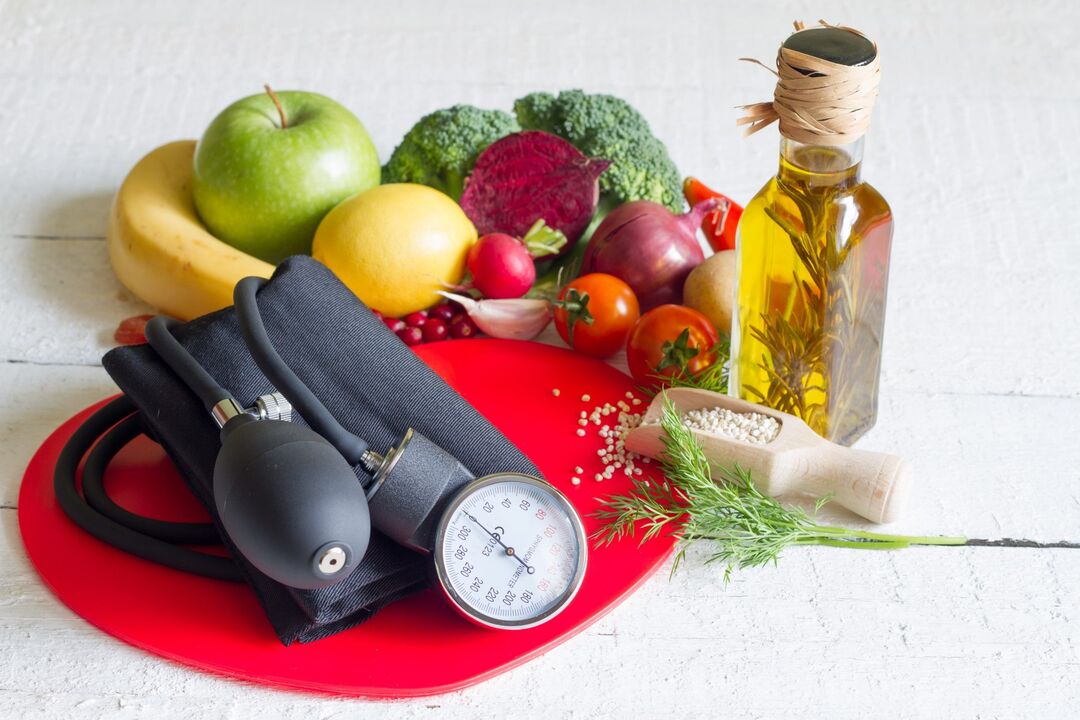
Hypertension Treatment
In the treatment of primary hypertension, non -magnets and complementary drugs are successfully used.
NO -Drug Methods to Treat Hypertension
They are prescribed for absolutely all patients with hypertension, even if a person receives medications to control blood pressure. These measures imply the elimination of risk factors, modifying the established lifestyle and human habits. Scientists have proved that non -drug treatment in certain cases is not less than drug treatment.
The main directions:
- Limiting the amount of table salt from food (up to 5-6 g per day). This implies a complete rejection of foods such as sausages, sausages, salty cheeses, canned foods, salty fish. It should also be taken into account that a significant amount of salt is contained in bakery products;
- The fight against overweight - people suffering from primary hypertension, it is recommended to reduce calorie content from the diet, limiting the use of fats;
- Restriction of the use of alcohol -containing drinks - up to 30 g of ethyl alcohol per day;
- A complete and strict refusal to smoke necessary, use the help of a narcologist;
- Regular physical activity is moderate, preferably daily, lasting at least half an hour. Fresh air events are preferred: running, walking at a rapid pace, riding a bike.
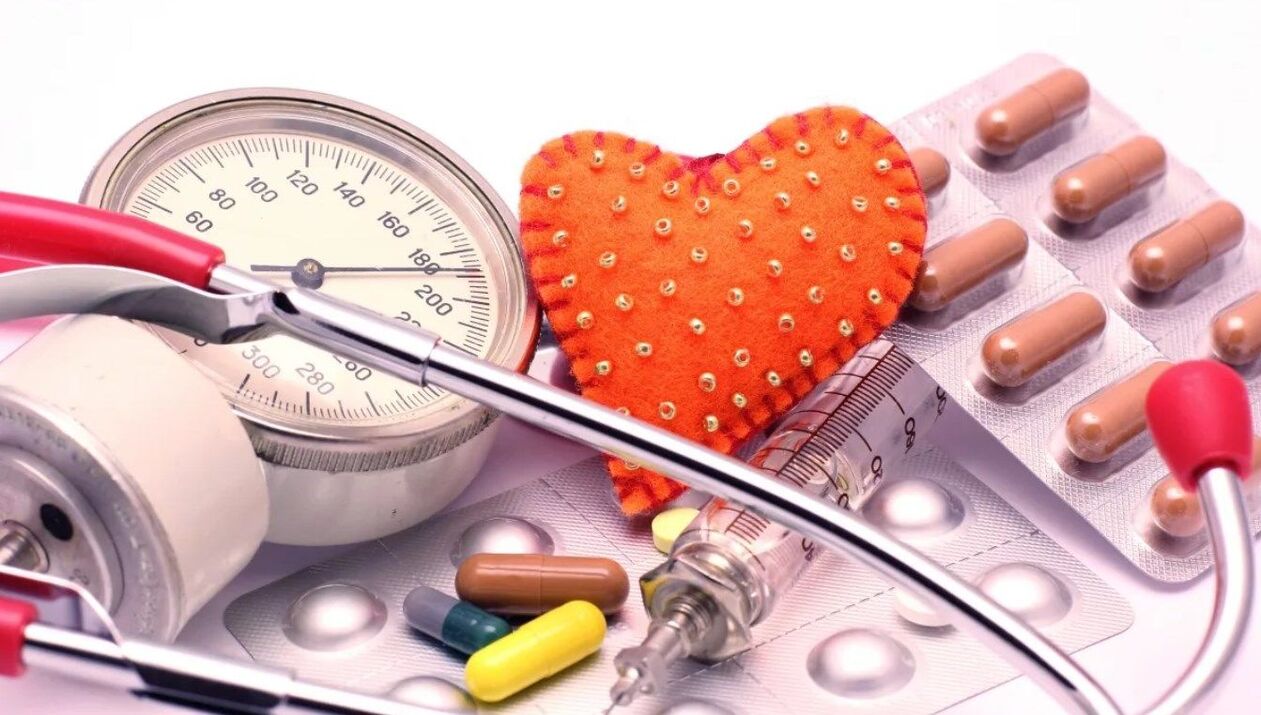
Drug treatment of hypertension
Implies drug use.
For effective treatment of primary hypertension, several classes of drugs are recommended by experts, they reduce blood pressure, affecting different stages of disease pathogenesis.
Main drug classes:
- inibidores da enzima angiotenzinzinoproding - IAC;
- Receptores de angiotensina - Sartans;
- Calcium antagonists;
- diuréticos;
- bloqueadores;
- Inibidores da renina;
- drogas de ação central (cérebro);
- Alpha-blockers.
Combinações de medicamentos para o tratamento da hipertensão arterial
In the treatment of hypertension, combinations of drugs from various groups are widely used, for example, IACD + diuretic, calcium antagonist + IACF, -block + Sartan + diuretic. A indústria farmacêutica moderna produz um grande número de medicamentos combinados prontos -que simplificam bastante a medicação.
Deve-se notar que o tratamento da hipertensão é realizado sob o controle contínuo de um médico-terapeuta ou cardiologista. O médico determina o volume de medidas médicas, o momento de prescrever medicamentos, dosagem, etc.
A prescrição independente de medicamentos anti -hipertensivos é inaceitável. With the development of malignant hypertension, which is not subject to drug effects, surgical treatment of hypertension can be performed (stimulation of carotid sinus baroreceptors, renal disinner, etc. ).
Prevenção da hipertensão
A prevenção primária da hipertensão deve ser realizada desde a infância. Crianças, adolescentes e jovens devem passar regularmente de exames médicos com a medição da pressão arterial. A prevenção deve afetar os fatores de risco da doença. Children are shown a rational muscle load, excessive food, excessive consumption of salty foods is unacceptable. Secondary prevention aims to prevent disease progression. People who suffer from hypertension are against -night at night, extension work, as well as combined with nerve overloads.

















